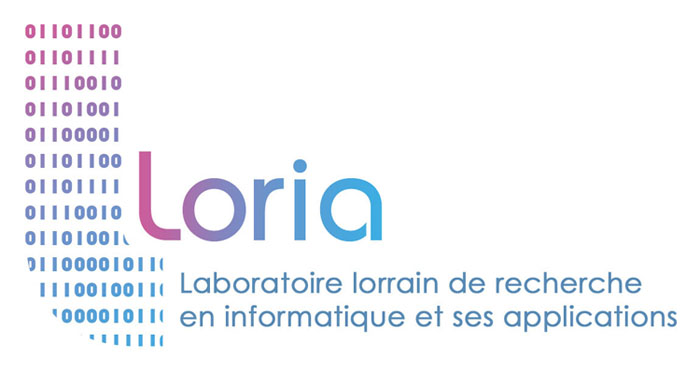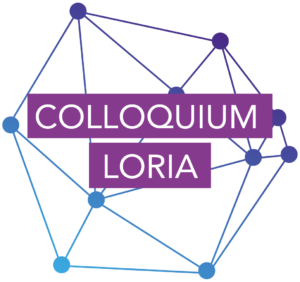[PhD] Modeling topic level interaction in pathological conversations
Supervision
The thesis will take place in the Sémagramme team, a team of the LORIA laboratory (UMR 7503) shared by INRIA, the University of Lorraine and the CNRS on the one hand, and the CLASP of the University of Gothenburg in Sweden on the other.
It will be supervised by Maxime Amblard (maxime.amblard@univ-lorraine.fr) and Ellen Breitholtz (ellen.breitholtz@ling.gu.se)
Description
Dialogue is at the core of human interactions, but it is also the place for many misunderstandings. It is thus interesting to build models to represent dialogue and try to better understand the features of a coherent interaction.
Since Montague Semantics [BM14], many theories have been proposed to model the meaning of language and in particular discourse modelling theories [GBM20, LA07]. Some of them have been extended in order to take interaction into account and be adapted to dialogue [HAK+15, AMR14] . Interaction is however complex to characterise and model. In conversations, the participants exchange on different topics and the understanding of the current state of the dialogue by each participant relies on their interpretation of the topic under discussion. Moreover, we also have to consider the stream of conscientiousness or other external event in the context of the conversation. Therefore, misunderstandings can lead to dialogue breakdowns.
SDRT, [AL03] is introduced as an extension of Discourse Representation DRT [KR93]. This dis- course theory was introduced by Hans Kamp in order to introduce a dynamic model of semantics calculus. To do so, DRT relies on the Montagovian tradition of semantics, which makes a strong link between natural language and logic. However, this type of approach fails to capture dynamic phenomena such as Donkey Sentences [Qui64]. One of the technical challenges is to define a notion of quantifier’s scope that is flexible enough to adapt to an entire utterance. In this, Hans Kamp does not break with a tradition based on compositionality, but opens the way to more flexible calculus. Hans Kamp originally propose such structures of the DRT as mental states.
However, participants usually implicitly agree on the topic which is not always obvious. Interpreting the conversation correctly is even more complicated when the dialogue involves participants with language disturbances such as patients with schizophrenia [BCHL21]. Hence, dialogues involving such participants highlight features that play a major role in dialogue coherence and understanding since they are more challenging to model.
Buts et objectifs
Classical dialogue representation theories [MGL+18, Bre20] have a high level of complexity because they try to model the contribution of each utterance to the context and the interpretation of each participant at any moment in the conversation. If these theories enable a very precise analysis, they make the global understanding of the dialogue more complicated and the interaction at a topic level is lost. It is thus interesting to think about a topic level representation that would enable to follow the conversation and analyse the inter- and intra-topic interaction. Moreover, formalising this model would help explaining the characteristics of a dialogue breakdown at a topic level and representing the different point of views of the dialogue when the participants’ interpretations diverge.
The metaphor of language use, particularly conversation, as a game can be traced to wittgenstein 1953 and [Lew79]. Lewis claimed that the development of a conversation can be seen in terms of a score analogous to that of a game like baseball. Lewis also introduced the idea of a scoreboard which keeps track of the progress of the dialogue.
The Dialogue GameBoard (dgb) is Ginzburg’s take on the scoreboard approach to dialogue analy- sis [G+96, Gin98, Gin12, GF+10, CG12], and an important feature of his theory of dialogue semantics – KoS – which has been developed over the last twenty years. This model is influenced by previous work in terms of the layout of the DGB. We suggest a version of the DGB which includes enthymemes and topoi, and accounts for how they may interact with each other and with various contextual and co-textual factors to create. For background on gameboard semantics in TTR we recommend the literature referred to above, particularly [Gin12] and [Coo16].
Following [Coo16] we will treat the information state of a conversational participant as a record, and the dialogue gameboard that represents the type of this information state as a record type. This means that the structures we will deal with usually represent the types of particular information states rather than the information states themselves. Thus the dialogue gameboard of an agent A is a type of agent A’s information state.
We are interested in how conversational and contextual features are introduced and integrated in the discourse model in the perspective of [Bor21]. Our focus is particularly on how individual agents draw on individual (and sometimes distinct) resources. The examples of real life dialogue will therefore be described and analysed using separate gameboards for each agent, representing the types of their respective information states.
The goal of this PhD is to explore dialogues model, especially how to combine enthymeme theory and SDRT. Figure 1 shows how some informations on the structure of the interaction can be retrived with the SDRT (in blue) and how dialogue theory provides a meta structure of the interacton (in green). The main task is to resolve all the issues on how we combine these elements, and show how it can be used in order to give a more fluent dialogical interaction (for example with bots) and moreover help to determine the coherence of a dialogue for health issues. One possible direction being to focus on combining gameboard approches of Dialogue and non-discourse relations (stream of consciousness, external noise or interaction, etc.) and challenge the representation for mental health issues on pathological data (SLAM, ODiM, DRiSP, MePheSTO projects), and real-life conversations, as for chatbots (Dayly Dialog corpus, S-BNC, Scose, Stac, etc.). The PhD will be jointly supervised by Sémagramme and Clasp for their expertise. And another part of the project will be to carry a new multilingual corpora wich help to showcase the work. For this purpose the PhD will take place half part in Nancy and Goteborg.
Bibliographie
[AL03] Nicholas Asher and Alex Lascarides. Logics of conversation. Cambridge University Press, 2003.
[AMR14] Maxime Amblard, Michel Musiol, and Manuel Rebuschi. L’interaction conversationnelle à l’épreuve du handicap schizophrénique. Recherches sur la philosophie et le langage, 31:1–21, 2014.
[AMR21] Maxime Amblard, Michel Musiol, and Manuel Rebuschi. (In)coherence of Discourse. Formal and conceptual issues of language. Language, Cognition and Mind (Chungmin Lee “Editor Springer book series). Springer, June 2021.
[BCHL21] Ellen Breitholtz, Robin Cooper, Christine Howes, and Mary Lavelle. Reasoning in Multiparty Dialogue Involving Patients with Schizophrenia, pages 43–63. Springer International Publishing, Cham, 2021.
[BM14] Jon Barwise and Julius Moravcsik. Formal philosophy. selected papers of richard montague. edited and with an introduction by thomason richmond h.. yale university press, new haven and london 1974, 369 pp. The Journal of Symbolic Logic, 47:210–215, 03 2014.
[Bor21] Maria Boritchev. Dialogue Modeling in a DynamicFramework. PhD thesis, IAEM, Université de Lorraine, 11 2021.
[Bre20] Ellen Breitholtz. Enthymemes and Topoi in Dialogue: The Use of Common Sense Reasoning in Conversation. Brill, Leiden, The Netherlands, 2020.
[CG12] Robin Cooper and Jonathan Ginzburg. Negative inquisitiveness and alternatives-based negation. In Logic, Language and Meaning, pages 32–41. Springer, 2012.
[Coo16] Robin Cooper. Type theory and language: from perception to linguistic communication. Draft of book chapters available from https://sites. google. com/site/typetheorywithrecords/drafts, 2016.
[G+ 96] Jonathan Ginzburg et al. Dynamics and the semantics of dialogue. Logic, language and computation, 1:221–237, 1996.
[GBM20] Bart Geurts, David I. Beaver, and Emar Maier. Discourse Representation Theory. In Edward N. Zalta, editor, The Stanford Encyclopedia of Philosophy, 2020. Spring 2020 Edition.
[GF+ 10] Jonathan Ginzburg, Raquel Fernandez, et al. Computational models of dialogue. Handbook of computational linguistics and natural language. Oxford: Blackwell. DOI: https://doi. org/10.1002/9781444324044. ch16, 2010.
[Gin98] Jonathan Ginzburg. Clarifying utterances. In Proc. of the twente workshop on the formal semantics and pragmatics of dialogues. Universiteit Twente, Faculteit Informatica, Enschede, pages 11–30. Citeseer, 1998.
[Gin12] Jonathan Ginzburg. The interactive stance. Oxford University Press, 2012.
[HAK+15] Julie Hunter, Nicholas Asher, Eric Kow, Jéréemy Perret, and Stergos Afantenos. Defining the Right Frontier in Multi-Party Dialogue. In 19th Workshop on the semantics and pragmatics of dialogue (SemDial 2015 – goDIAL), pages pp. 95–103, Göteborg, Sweden, 2015.
[KR93] Hans Kamp and Uwe Reyle. From discourse to logic: Introduction to modeltheoretic semantics of natural language, formal logic and discourse representation theory, volume 42. Springer Science & Business Media, 1993.
[LA07] Alex Lascarides and Nicholas Asher. Segmented Discourse Representation Theory: Dynamic Semantics With Discourse Structure, volume 3, pages 87–124. Kluwer, 10 2007.
[Lew79] David Lewis. Scorekeeping in a language game. Journal of Philosophical Logic, 8(1):339– 359, 1979.
[MGL+18] Vladislav Maraev, Jonathan Ginzburg, Staffan Larsson, Ye Tian, and Jean-Philippe Bernardy. Towards kos/ttr-based proof-theoretic dialogue management. In Proceedings of the 22nd Workshop on the Semantics and Pragmatics of Dialogue – Full Papers, Aix-en- Provence, France, November 2018. SEMDIAL.
[Qui64] Willard V Quine. Reference and generality, 1964.


